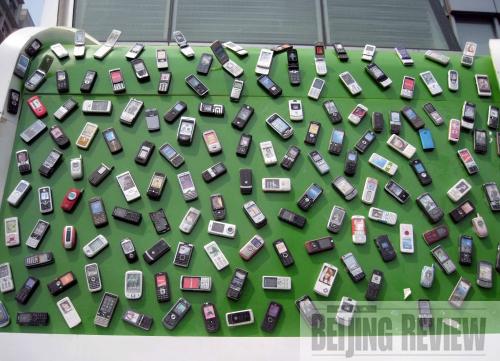|
 |
|
ZHANG YANHUI |
Numbers of the Week
1 billion
China's phone users had topped 1 billion by the end of March, with 335 million fixed-line phone users and 670 million mobile phone users.
4.2 million kw
Laxiwa, the biggest hydroelectric power plant on the Yellow River with total installed capacity of 4.2 million kw, started generating electricity on May 18.
TO THE POINT: China detailed its revitalization plan for light industry and, in the meantime, hiked subsidies for auto and home appliance replacement to further tap into consumers' wallets. China's fiscal revenue continued to drop, recording a year-on-year 13.6-percent plunge in April. The country's overseas financial assets increased despite the global economic downturn, but analysts warned China should stop buying U.S. securities. A Brazilian oil giant inked an oil-for-loan agreement with China due in part to the latter's healthy financial system. It was the fifth such agreement signed between China and a foreign country this year.
By LIU YUNYUN
Light Industry's Chance
The State Council announced on May 18 a detailed stimulus plan for light industry in another move to create more jobs in the next three years by beefing up domestic demand.
In 2008, the added value of light industry stood at 2.62 trillion yuan ($383.6 billion), accounting for 8.7 percent of the country's GDP. Exports reached $309.2 billion, accounting for 21.7 percent of the national total. Last year, China was the largest producer of more than 100 types of products in light industry, including home appliances, plastics and furniture.
More importantly, 70 percent of light industry sectors and half of the industry's output involve the processing of agricultural and sideline products, directly benefiting more than 200 million farmers. The industry employed around 35 million workers by the end of 2008.
But China's light industry has felt the pinch from waning export demand in the global economic downturn that began last year. In a move to boost domestic sales of light industry products, China has allowed rural residents to buy home appliances with a 13-percent subsidy since February.
The State Council outlined 10 measures to help light industry:
-expanding the home appliance subsidy program to cover more types of products;
-increasing export tax rebates on certain products;
-relaxing restrictions on processing trade and adjusting the Catalogue of Commodities Prohibited for Processing Trade to include only products that are energy- and resource-intensive and cause heavy pollution;
-boosting sales of agricultural and sideline products by increasing state reserves as well as business inventories;
-bolstering innovation and the industrial upgrading of light industry;
-facilitating enterprises in securing bank loans;
-providing more support to small and medium-sized enterprises;
-strengthening the guidance of industrial policies;
-encouraging mergers and acquisitions; and
-eliminating obsolete capacity.
Through all these measures, China will endeavor to create 3 million new jobs, foster 10 conglomerates whose annual sales will exceed 15 billion yuan ($2.2 billion), and cultivate about 100 independent brands within the industry by 2011. Chemical oxygen demand (COD) emissions will be cut by 10 percent, or 255,000 tons, compared with 2007.
The plan also stressed food processing safety and outlined measures such as investigating the use of illegal food additives, improving manufacturing processing monitoring and supervision, enhancing food market access and having in place a food recall and market withdrawal mechanism.
New Subsidy to Spur Consumption
The State Council increased subsidies for consumers who scrap old cars and home appliances to buy new ones in an effort to increase energy efficiency and reduce pollution.
On May 19, the State Council decided to increase total subsidies from 1 billion yuan ($146 million) to 5 billion yuan ($732 million) to fund those who discard old autos with high emissions.
The Central Government appropriated an additional 2 billion yuan ($292 million) for home appliance replacement. People who buy television sets, refrigerators, washing machines, air conditioners and computers can receive a subsidy worth 10 percent of the price of the new item.
Zhu Lijun, an industrial economy researcher at the Chinese Academy of Social Sciences, said the government aimed to spur middle and low-end consumers, as the 10-percent subsidy is not a big boon for high-end consumers.
Fiscal Revenue Plummets
China's fiscal revenue fell 13.6 percent from the previous year to 589.72 billion yuan ($86.3 billion) in April, while January-April fiscal revenue was down 9.9 percent to 2.05 trillion yuan ($300 billion), according to the Ministry of Finance.
| 